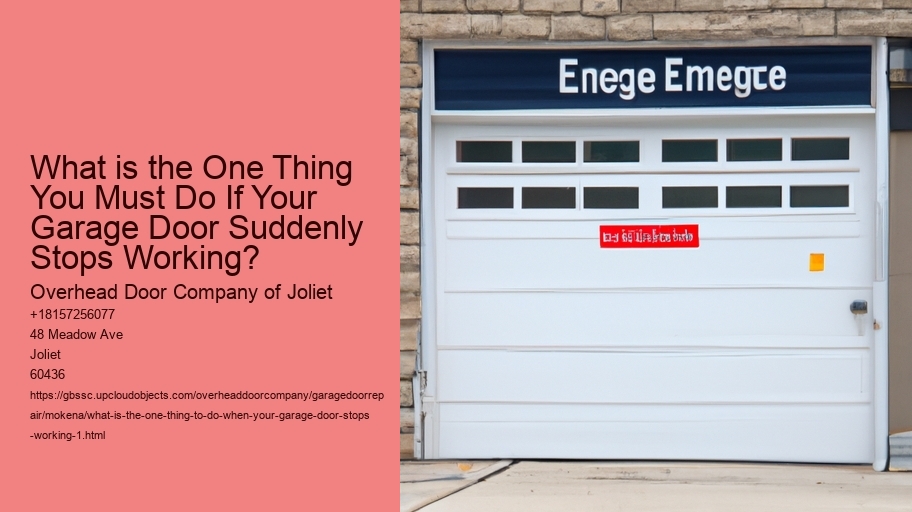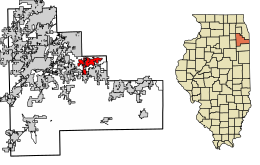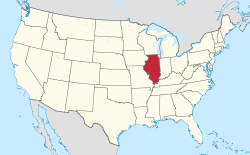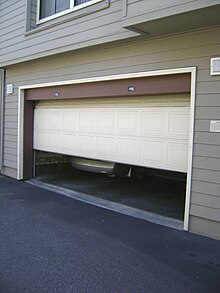What Kind of Garage Door Opener and Door Do You Have? What do you do when your garage door suddenly stops working? .
It is essential to understand the garage door and opener you own before you start troubleshooting.
Garage doors are generally classified into different categories based on their design and operation.The most frequent doors are roll-up, sectional as well as tilt-up doors.Sectional doors are made of panels joined by hinges, allowing the doors to bend as it opens and closes along vertical track.Roll-up doors, which are typically found in commercial settings made from slats that roll up into a coil.
The tilt-up door, on contrary, is a solid, single piece that opens by tilting inward and upward. Also important is knowing the type of garage door opener.The three types of garage door openers are belt-drive, chain drive, and screw-drive openers.Chain-drive openers, which use chains of metal to raise and lower the door, are long-lasting and affordable, however they can be noisy.Belt-drive openers work similarly, however, they employ a rubber belt which makes them quieter and ideal for attached garages.Screw-drive openers operate by means of a threaded steel rod providing a compromise between noise and cost.
What is the one thing to do when your Garage Door Stops Working? - Internet privacy
- chain drive
- ceiling
- Cairo
Once you have identified your garage door's type and the opener's model The next step is to carry out simple checks for common issues.Ensure there's power to the opener by checking the outlet as well as the breaker.Inspect the release cord for manual to make sure it's not been pulled, which will disconnect the door from the opener.Examine the door's tracks and rollers for obstructions or damages and remove any debris.
Lubricate moving parts when needed since a lack of lubrication can result in jamming, sticking or even squeezing.If the door is still unable to work, you should consider resetting the opener.This can often resolve electronic malfunctions or faults.Consult the manual of your opener for specific reset instructions as this process can vary between models.Many modern openers include a reset button, while others may require unplugging and plugging it back in.
The tension on springs can be high, and it can be hazardous to repair them without the proper tools.
In the end, if your garage door suddenly stops working, it is
Look for any obstructions or other debris
It can be a bit frustrating and even confusing when your garage door ceases to function abruptly, particularly if you utilize it regularly.
This simple, but efficient step can be used to identify the issue and bring back the functionality of your garage.Garage doors are based on a system of tracks, rollers, and other moving parts that have to be free of obstacles in order to function smoothly.Over time dirt, leaves, small rocks or other debris could accumulate on the tracks or become stuck in the rollers.Even a small obstruction can cause the door to stop opening or closing properly.Therefore, a thorough inspection of these parts should be your first course of action.
Begin by examining the tracks on both the left and right sides of the door. Examine for obvious obstructions or accumulation. If you spot something odd, such as an acorn, or a rock stuck in the track. Remove it with care.
Sometimes, the issue may not be obvious So, it's recommended to run your hands along the track in order to feel for any hidden obstacles.Ensure that the tracks are aligned properly too, since a an incorrect alignment can cause the door to become jammed.After that, check the rollers as well as hinges.These parts should be able to move without resistance.If they are sticky or stuck, it might be a sign of accumulated dirt or rust.In situations like this cleaning them and applying lubrication will often solve the issue.Use a soft brush or cloth to wipe away any dust, and then apply a lubricant that is suitable to ensure a smooth and easy movement.
It's also vital to look over the area around the door itself.Sometimes things stored in the garage could accidentally slide or shift, obstructing the pathway of the door.Ensure that the area is clean and that nothing is blocking the door's movements.
If, after clearing any apparent obstructions, the door does not work you should think about checking the sensors.
The sensors in modern garage doors could malfunction if they are dirty or not aligned properly.If you keep your path clear and by avoiding obstacles, you will save yourself the hassle of calling a professional to resolve a problem that's often simple.
Make sure you check the wall switch and remote control
It is important to verify the wall switch and remote control.
These components are frequently the culprits behind the garage door not responding, and checking them can save you time and potentially avoid costly expenses.First, consider the remote control.This handheld device is your primary tool for operating the garage door without direct physical interaction.Over time, remote controls can experience issues such as drained batteries, signal interference, or even internal damage.Start by replacing the batteries with new ones.It might seem simple, but dead batteries are a common reason for a garage door not responding.If the problem persists after replacing the batteries, try reprogramming the remote according to the manufacturer's instructions.Additionally, ensure that the remote is within the recommended range and that there are no obstructions blocking the signal.
Next, you should pay attention towards the wall switch. It is also a important component of the garage door's mechanism.
If you are comfortable, open the switch panel to check for any damaged or broken wires.The remote control or wall switch might be working correctly, but the door is still not responding. This could mean that there is a problem with the garage opener unit or related components, like sensors or door tracks.
These issues can be resolved before you move on to more intricate troubleshooting.This initial inspection will make it easier for you to get your work done and give you confidence that you've taken the proper steps to identify the issue.
Check the door's balance manually
It can be frustrating and frustrating when your garage door stops functioning. Garage doors are an integral part of your house, as it provides security, protection against elements, as well as the ability to access your car and storage space.
The balance test that you can do manually for the garage door is crucial step to take if your door is malfunctioning. This simple but effective method will help you diagnose any issues that could be causing it and help prevent the possibility of further damage.What is the one thing to do when your Garage Door Stops Working? - Great Lakes
- Orland Park
- ITT Technical Institute
- pricing
A garage door's balance is essential for its proper operation. A door that isn't balanced could cause more serious problems like misalignment or broken springs.
Begin by disconnecting the garage door opener.
Most garage doors feature an release mechanism, usually with a red handle or cord that allows you to disconnect the door from its motor.Once the door is disconnected then carefully raise it up to around waist-high, and then release it.A well-balanced door will remain in place or move slowly.If the door begins to fall fast or jumps up the floor, it could indicate an imbalance.It is best to consult a professional to help you adjust the springs so that your garage door is correctly balanced. This is not just going to fix the issue, but also increase the life span and longevity of the system.
In the end, testing manually the door's balance is an important initial step when your garage door suddenly stops working.
What is the one thing to do when your Garage Door Stops Working? - Internet privacy
- talk show
- Great Lakes
- Internet privacy
Review the Tracks and Rollers.
When confronted with a garage door that suddenly ceases to work, your first instinct might be to worry or consider the most difficult technical issues.However it is often the answer is a simple check of the tracks and rollers.This essential check will reduce time and costly repairs, making it the one factor you must consider when your garage door stops functioning.
Tracks and rollers are critical elements of your garage door's operating system.The tracks comprise the metallic rails that help guide the door's opening and closes, while the rollers are the small wheels that move along these tracks.
These components can be worn out, dirty or misaligned over time. This can cause problems with the operation.Start by inspecting the track for obstructions. Dust, grime or even small pieces of debris can accumulate, causing rollers to struggle to move across the track. Cleaning the tracks with a wet cloth can resolve the issue.
The next step is to check the alignment of the tracks.Tracks must be straight and parallel to other.If they appear bent or not in alignment, your door may jam.You can gently tap the misaligned sections back into alignment using a rubber mallet.However in the event that the damage is significant the best option is to consult a professional to adjust them properly to ensure safety and function.
It is also important.Over time, the rollers could be damaged or worn out particularly if made out of plastic.
Metal rollers that have bearings last longer, and provide better performance.The use of silicone-based lubricants will lower friction and wear. Make sure you lubricate the hinges and springs in order for ensuring that your garage door is functioning properly.
In conclusion, checking the tracks and rollers is an effective first step if your garage door suddenly ceases working.It's a straightforward process that will often reveal and fix the most common issues.By making sure these components are clean, aligned and well-lubricated, you could usually restore your garage door fully functional without the need for expensive repairs.
Regularly inspecting and maintaining these parts will also aid in preventing future malfunctions. This will help prolong the lifespan of the garage system.Check for visible damage or wear
It can be frustrating and frustrating when your garage door stops working suddenly, especially if you're heading home, or trying to lock your home for the night.
The garage door is a complicated device made of multiple parts, like springs cables, rollers, and tracks, each of which plays essential roles in its seamless operation.Over time, these parts are prone to wear and tear due to regular use and exposure to environmental elements.
You can easily spot obvious defects by conducting an examination of the area.Start by inspecting springs. They are responsible for lifting and lowering the door. Examine for indications of wear or rust. A worn or damaged spring could make the door unusable, which is why it's important to fix this problem immediately. The next step is to check the cables for signs of fraying and broken cables.
The door is another area that needs attention. Examine for visible damage, warping or bends.
Make sure that the sensors at the door are clean and in alignment. Uneven or dirty alignment could cause the sensors to fail and stop working.While a visual inspection could offer valuable insight However, it's important to be aware that some issues may not be immediately apparent.If you do not find any obvious signs of damage or wear, you may need to consult a professional technician to identify and fix the problem.However when you conduct an initial examination, you are able to detect and fix minor issues before they turn into significant and costly repairs.
This method will not only aid in identifying the problem quicker, but will assist you in taking action to restore your garage door's functionality.
You can extend the life of your garage door by taking a proactive approach.Examine the Springs and Cables
It's frustrating when your garage door ceases working. You should check the springs as well as the cables. These parts are essential to the smooth operation of your garage and are the primary reason for malfunctioning garage doors.
Springs play an essential part in the functioning of your garage door, counterbalancing the door's weight.When the door is moving, the springs support the majority of the weight, allowing the door to shut and open smoothly.There are typically two types of springs: torsion springs as well as extension springs.Torsion springs are placed over the garage door, and they twist to store energy. On the other hand, extension springs are situated on either side of the door and stretch to allow the required force.
These springs are prone to be worn out with time and break, or lose tension causing problems in operation.In the same way, cables are crucial since they work with springs that lift and lower the door.They typically consist of steel and designed to withstand a lot of tension.However they are susceptible to suffering from wear and tear, break, or snap due to the pressure they're under.A damaged cable could result in the door becoming unbalanced or become completely inoperative.
In the process of assessing springs and cables, start by checking them.Look for signs of wear, rust, or fraying.If you find a damaged cable or spring, it's important to avoid opening the door until the problem is resolved, as forcing it may cause further injury or result in an accident.If the springs seem to be in good condition however the door is not functioning, it may be due to them losing tension and require adjustment.
It's vital to focus on the safety aspect when working with garage door parts.
The cables and springs are in tension and could result in serious injuries. If you don't have any experience with garage repair, it's best to call a professional. They'll have the tools and experience needed to safely fix or replace these parts. This ensures the garage door works in a safe and efficient manner.In conclusion, when your garage door suddenly stops working, assessing the springs and cables is a key step in diagnosing the problem.Understanding their role and potential issues can help you determine whether a simple adjustment is needed or if professional intervention is required.Taking prompt action not only restores functionality but also ensures the safety and longevity of your garage door system.
You might want to consider calling a professional technician
When your garage door stops working and it is not working, it could disrupt your routine and could even be a security risk to your home.
While it is tempting to get your toolbox and attempt a do-it-yourself fix but the best option is to call an experienced technician.This choice not only guarantees your safety, but also provides an effective and long-lasting solution to the issue.Garage doors are complex systems composed of various components such as springs, cables, tracks, and electronic parts.Each of these elements plays a crucial role in the door's operation, and a malfunction in any part can cause the entire system to fail.Without proper knowledge and experience, attempting to fix these issues can be dangerous.For instance, garage door springs are under high tension and can cause severe injury if handled improperly.Professional technicians are trained to deal with these risks safely, using the right tools and techniques to handle repairs.
A professional technician adds a degree of knowledge and experience that laypeople do not have.
They can quickly diagnose the issue and identify whether it's a minor problem, like a misaligned track, or something more serious, like a broken spring.This expertise not only saves you time but also prevents the potential for further damage that can occur with incorrect handling.Professionals also have access to high-quality parts and can ensure that replacements match the specifications of your existing garage door system, leading to better functionality and longevity.A professional technician may be more cost effective in the long haul. While DIY methods DIY technique may seem more affordable at first however, it could lead to larger and more expensive repairs later.
The majority of technicians provide warranties for their services. This gives you assurance that in the event something goes wrong, the problem is guaranteed.A professional's help will help you save time and money. It can be difficult to comprehend the workings of garage doors, acquire the correct equipment and carry out the repair can take some time or even days. A technician will be able to fix the issue fast and allow you to get back to your regular routine.
In the end, although the desire to repair your garage door yourself may be strong, calling a professional technician is the safest effective, efficient, and in the end, the most sensible option.Their know-how in locating quality parts, and the ability to make quick and precise repairs will ensure that your garage door is up and running in no time and will protect your home as well as


















